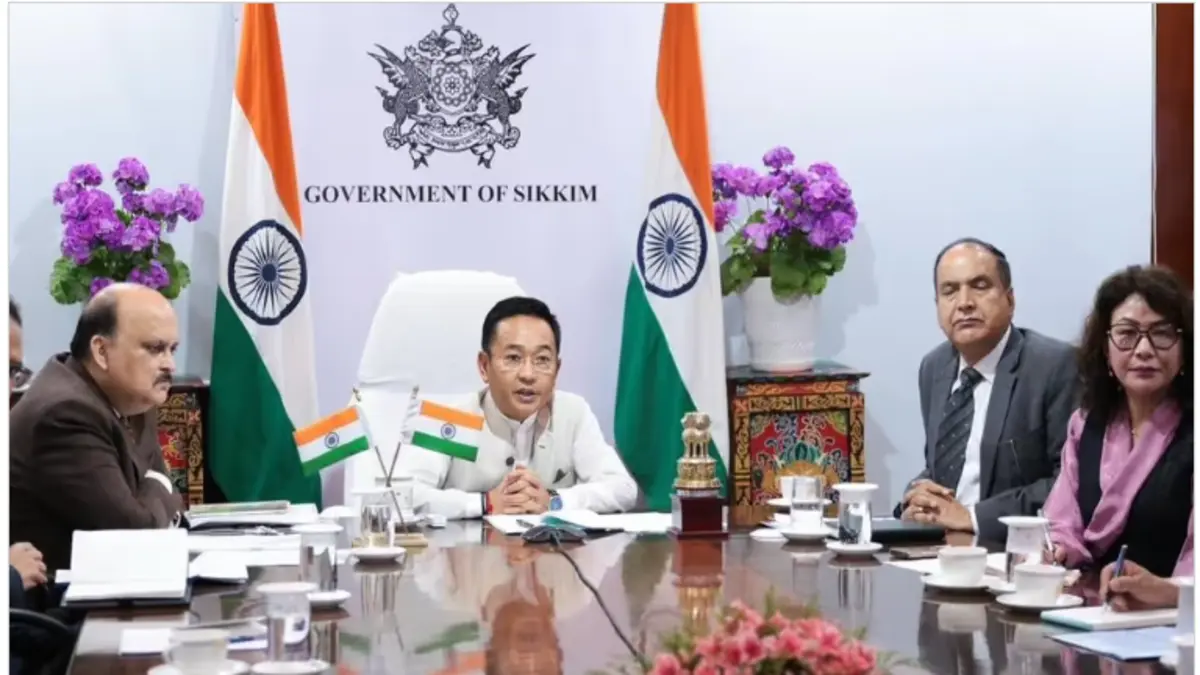Gangtok, Sikkim: Northeast India, a region blessed with fertile land, abundant water, and rich biodiversity, contributes just 1.5% of the country’s total agricultural output despite holding 30% of India’s freshwater resources. This paradox has long puzzled policymakers—but now, a high-powered task force led by Sikkim Chief Minister Prem Singh Tamang and Union Minister Jyotiraditya Scindia is determined to change that.
In a closed-door meeting last week, the Ministry of Development of North Eastern Region (MDoNER) convened chief ministers, bureaucrats, and industry leaders to finalize a six-month action plan to boost farm productivity, improve market access, and link agriculture with tourism. If successful, this initiative could transform the lives of millions of small farmers while positioning the Northeast as a hub for organic produce, agro-tourism, and food processing.
Why This Task Force Was Formed
The High-Level Task Force (HLTF), chaired by Tripura CM Manik Saha, was created after years of stalled progress in the region’s agricultural sector. Despite heavy rainfall and fertile soil, farmers struggle with:
- Poor infrastructure: Only 15% of farmers have access to cold storage.
- Weak market links: Over 60% of produce spoils before reaching cities like Kolkata or Delhi.
- Low-tech adoption: Fewer than 10% of farmers use digital tools for soil testing or weather forecasts.
“Agriculture isn’t just about growing crops—it’s about jobs, stability, and future growth,” CM Tamang said in his keynote address. “But without better roads, storage, and fair prices, our farmers will keep falling behind.”
The 5-Point Plan to Fix Northeast Farming
The task force’s strategy focuses on practical, fast-tracked solutions rather than long-term theoretical policies. Here’s what’s being rolled out:
1. Cold Storage & Transport Overhaul
- Problem: Losing ₹12,000 crores yearly due to rotting produce.
- Solution: Build 200+ new cold storage units near farms by 2026, with priority in Assam and Manipur.
- Key Project: Upgrading the India-Myanmar-Thailand Highway to speed up exports.
2. Stronger Farmer Cooperatives
- Success Model: Sikkim’s EFRAC-QIMA lab helps farmers test food quality for export.
- New Move: Replicate this in Nagaland and Mizoram for spices like Bhut Jolokia (Ghost Pepper).
3. Tech-Driven Farming
- Drones & Sensors: Pilot project in Meghalaya to monitor soil health.
- App-Based Markets: A new e-Nam Northeast portal to help farmers sell directly to buyers.
4. Easier Loans & Private Investment
- Bank Reforms: National banks like SBI and NABARD offer lower-interest loans for agri-startups.
- Big Investors: Poonawalla Group (Nagaland) and Ambuja Neotia (Sikkim) are setting up food parks.
5. Linking Farms to Tourism
- Agri-Tourism Hotspots:
- Sikkim: Organic tea estate tours.
- Arunachal: Tribal farm stays.
- Nagaland: Bhut Jolokia food festivals.
What Farmers & Experts Are Saying
- Lalremruata, Mizoram Farmer: “We grow the best oranges, but trucks take 3 days to reach Assam. Half the batch is wasted.”
- Jyotiraditya Scindia, Union Minister: “This isn’t just about subsidies—it’s about building a system that works.”
- NITI Aayog Report: Estimates doubling farmer incomes by 2030 if reforms stick.
Challenges Ahead
- Climate Risks: Erratic rains and landslides disrupt supply chains.
- Inter-State Disputes: Land ownership laws differ across states.
- Bureaucratic Delays: Past schemes like NESIDS saw funds stuck in approvals.
The Bottom Line
The Northeast needs everything to become India’s next breadbasket—water, land, and hardworking farmers. The real test is whether governments, banks, and businesses can move quickly before another generation is left behind.
As CM Tamang put it: “We’ve talked for decades. Now, it’s time to act.”










